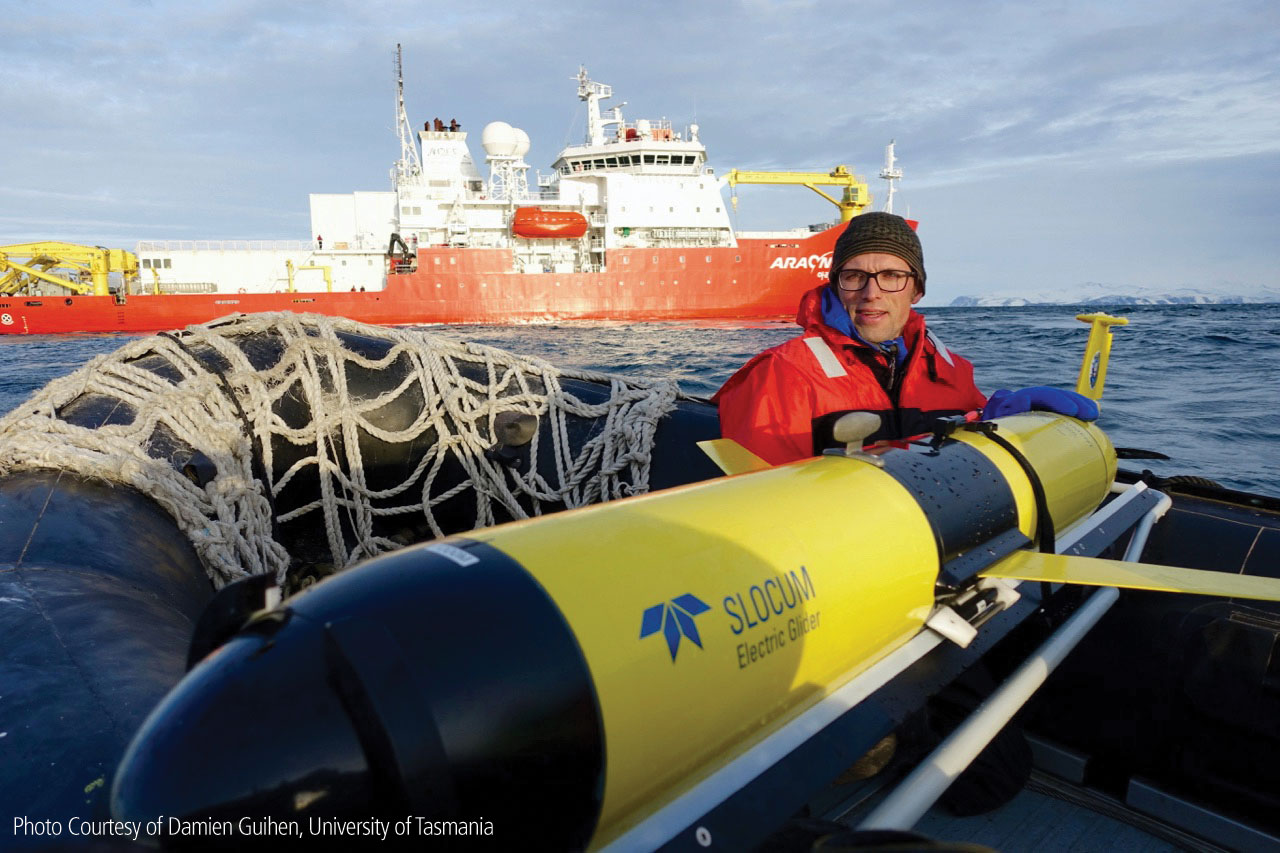
Scientists from several major institutions around the globe led by the Korean Polar Research Institute (KOPRI) and including the University of California – Davis (UC Davis) conducted collaborative research in February 2017 in the Western Ross Sea. The goals of the expedition were broad and the expertise from the teams spanned a wide range of disciplines. Dr. Alexander Forrest headed up the group running autonomous systems both under and in front of the Nansen ice shelf in the Western Ross Sea to better understand under ice heat flux and its effect on the rate of ice shelf channeling and deterioration.
The channels are a result of melting of the underside of the ice mass caused by upwelling fresh water created from the melting ice at deeper depths. As this process continues, the channels work their way up through the ice shelf. This leads to a weakening of the ice shelf and eventual cracking and complete detachment. These large detachments, called large mass wasting events, are of significant size. A detachment occurred in April of 2016 that was roughly the size of Manhattan, about 20 kilometers long.
Prior to the use of autonomous vehicles, measurements were conducted both manually by walking out on the ice to measure ice thicknesses and also by making estimates using satellite measurements. There have also been some studies using data collected under the ice by passing submarines. All three methods are less desirable than using current AUV technologies because they are either less accurate or provide data from only relatively small sampling areas.
